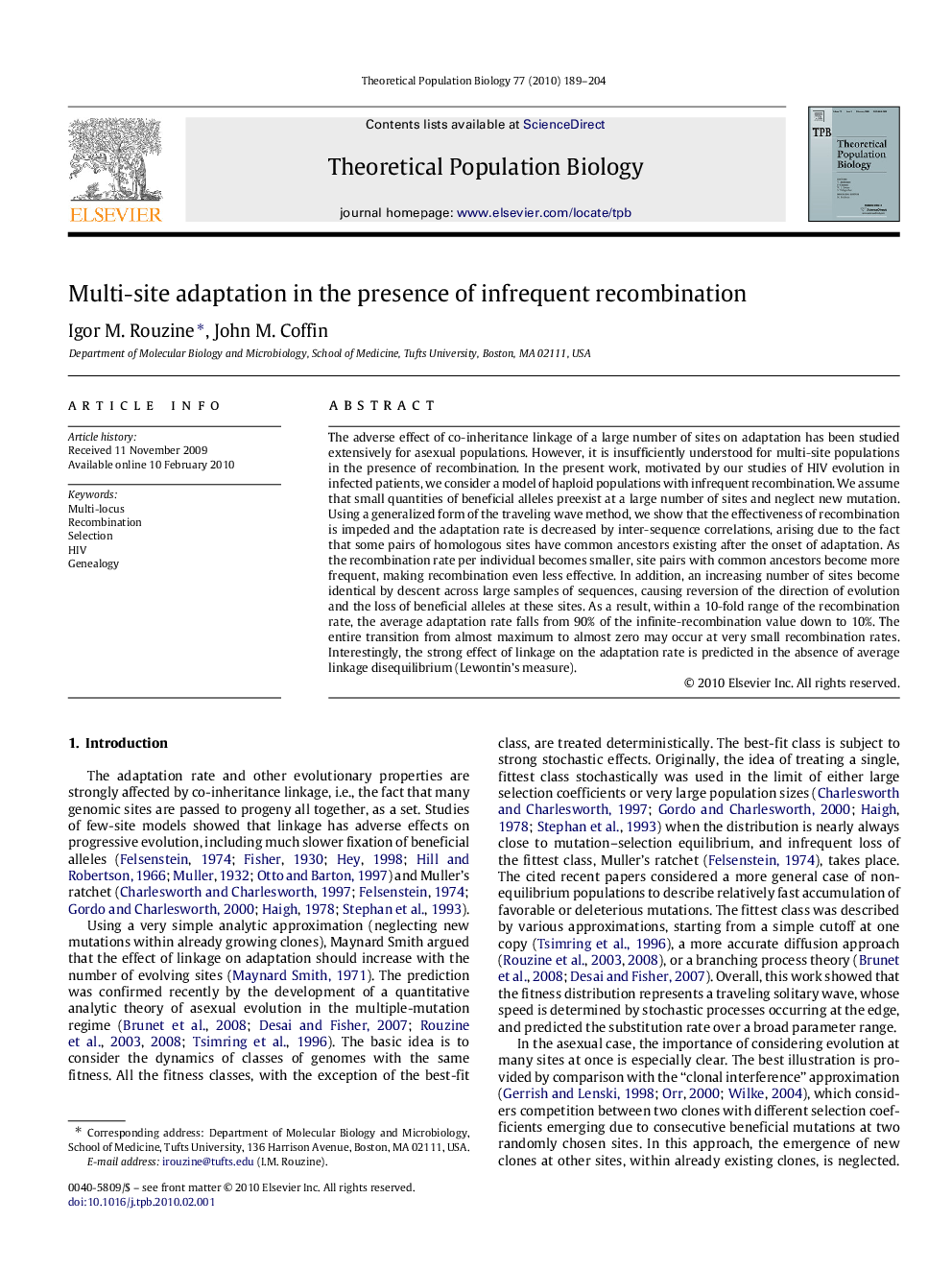| کد مقاله | کد نشریه | سال انتشار | مقاله انگلیسی | نسخه تمام متن |
|---|---|---|---|---|
| 4502668 | 1320590 | 2010 | 16 صفحه PDF | دانلود رایگان |

The adverse effect of co-inheritance linkage of a large number of sites on adaptation has been studied extensively for asexual populations. However, it is insufficiently understood for multi-site populations in the presence of recombination. In the present work, motivated by our studies of HIV evolution in infected patients, we consider a model of haploid populations with infrequent recombination. We assume that small quantities of beneficial alleles preexist at a large number of sites and neglect new mutation. Using a generalized form of the traveling wave method, we show that the effectiveness of recombination is impeded and the adaptation rate is decreased by inter-sequence correlations, arising due to the fact that some pairs of homologous sites have common ancestors existing after the onset of adaptation. As the recombination rate per individual becomes smaller, site pairs with common ancestors become more frequent, making recombination even less effective. In addition, an increasing number of sites become identical by descent across large samples of sequences, causing reversion of the direction of evolution and the loss of beneficial alleles at these sites. As a result, within a 10-fold range of the recombination rate, the average adaptation rate falls from 90% of the infinite-recombination value down to 10%. The entire transition from almost maximum to almost zero may occur at very small recombination rates. Interestingly, the strong effect of linkage on the adaptation rate is predicted in the absence of average linkage disequilibrium (Lewontin’s measure).
Journal: Theoretical Population Biology - Volume 77, Issue 3, May 2010, Pages 189–204